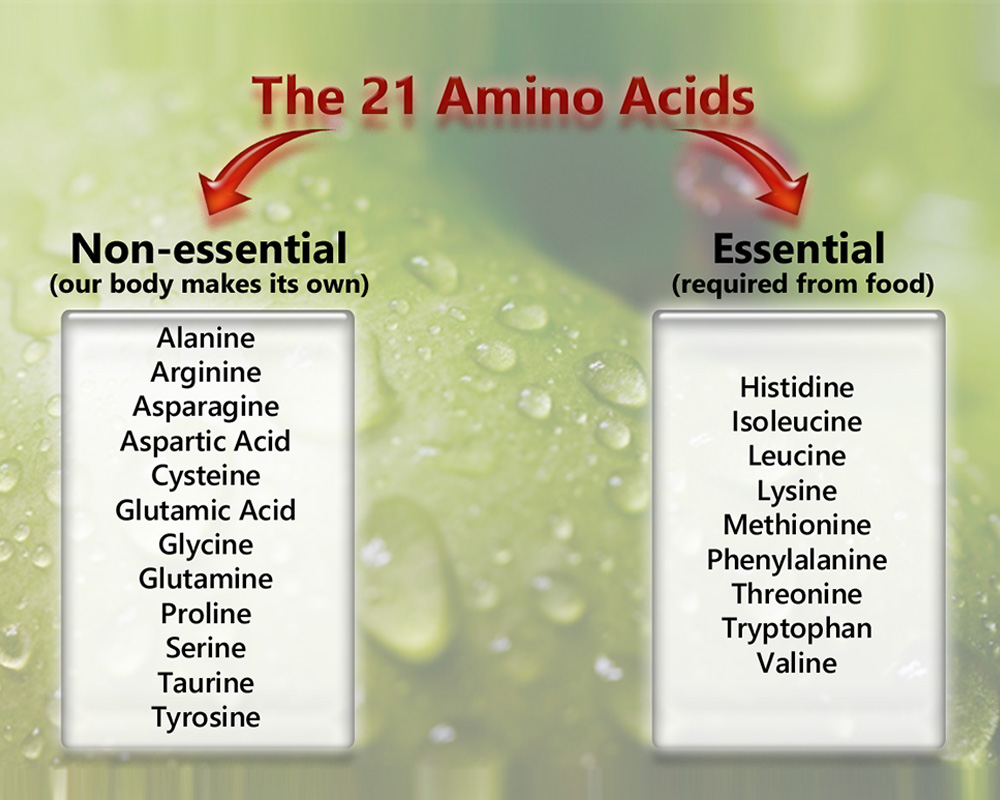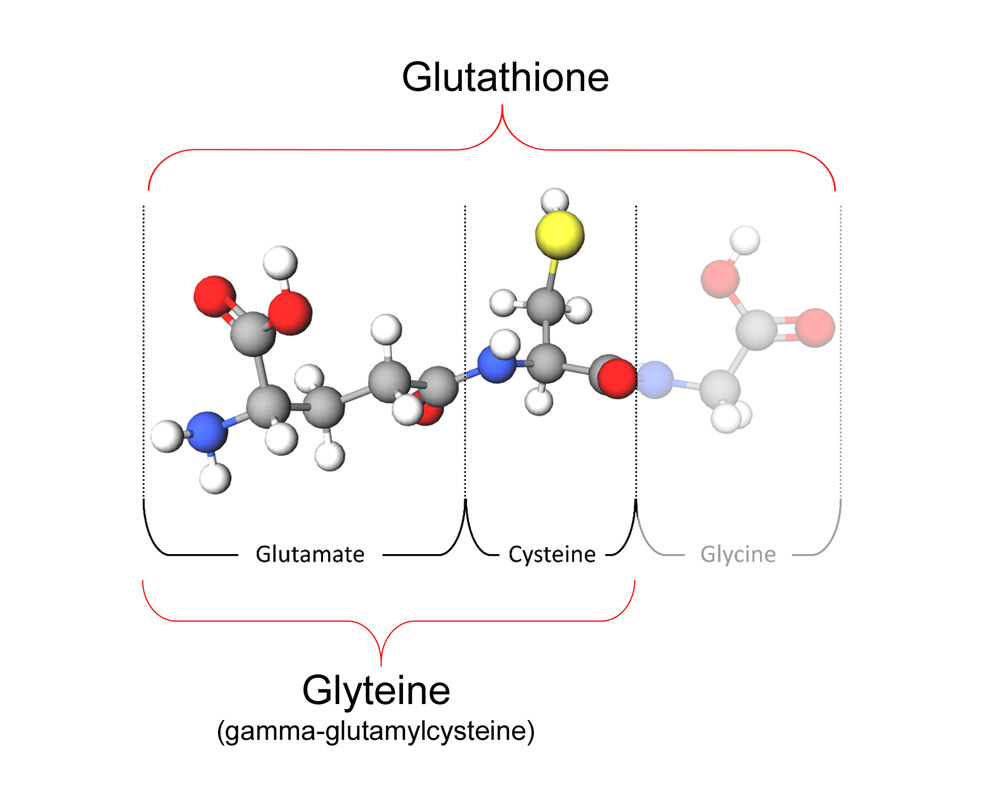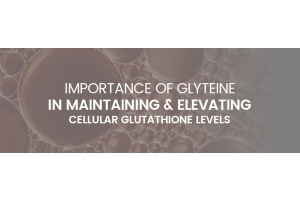and why taking them to increase glutathione is a futile strategy
Before we delve into the world of amino acids, here is a little spoiler. Glutathione is made up of amino acids, three of them in fact: Cysteine, Glutamic Acid and Glycine. You may have known this, but here is what you didn't know: Taking any of those amino acids in the hope of increasing cellular glutathione is nothing but wishful thinking.
So why are there so many products on the market that contain these amino acids and claim they can increase glutathione? Well, it's just clever marketing: If you take the building blocks of glutathione, surely it will stimulate glutathione production. To strengthen the argument, you will find fancy names for essentially the same thing, making it all sound very scientific. But it is not that simple, so let's find out why.
What are Amino Acids?
Most of us are familiar with vitamins and their importance for our health. We are also aware that many, such as Vitamin C, need to come from our food and are known as "essential". Others are synthesized by the body and are therefore "non-essential", like Vitamin D for example. Amino Acids share these classifications; however, we are much less familiar with their names and their roles in our wellbeing.
Amino Acids are essential components of the proteins in our body. We have thousands of different proteins that serve specific functions and are the structural make up of our cells, tissues, and many enzymes and hormones. Proteins are also a vital tool for our immune system to protect us from bacteria and viruses.
Typically, a protein comprises many hundreds of amino acids in a specific sequence unique to each protein. These sequences are like a language known as the Genetic Code, which is a part of our genes. Whilst tiny variations in our genes make each individual unique, the genetic code containing the instruction to make proteins is identical in almost all forms of life. It is now easy to understand why amino acids are called the "Building Blocks of Life".
The 21 Amino Acids
Part of our body's continual renewal process involves the repair and replacement of proteins. To achieve this, we need a steady supply of amino acids. Most forms of life need 21, and, just like vitamins, some amino acids are essential and need to be consumed in the form of proteins. These are then broken down into amino acids during digestion. The other amino acids are produced by the body and therefore do not have to come from our diet. Figure 1 shows the 21 amino acids categorized by their classification as either essential or non-essential.

Figure 1.
The building blocks of glutathione
Glutathione is a protein, albeit a small one called a tripeptide, because it consists of only three amino acids. Let's look at our table of amino acids again, this time highlighting the three amino acids that combine in our cells to form glutathione (figure 2).

Figure 2
We now understand that glutathione is made up of Cysteine, Glutamic Acid and Glycine, but there is a very important detail that often goes unnoticed:
All three amino acids that combine to make glutathione are non-essential
Our body produces all three, so there is no need to supplement them. You may have heard that two of these amino acids, Cysteine and Glycine, are classified as "Conditionally essential", meaning they may need supplementation in certain conditions. But this is limited to people with severe liver disease or premature infants, so don't waste your money.
Flawed strategies
Let's discuss the four popular supplements on the market that claim to increase cellular glutathione:
N-acetylcysteine (NAC)
Despite its rather extravagant name, NAC (or any other cysteine-based prodrug) is just a form of Cysteine. We have already discussed clever marketing ploys, and this is no different. The basic biochemistry of glutathione is not swayed by fancy terminology. You now understand that Cysteine is a non-essential amino acid, so taking more will not increase cellular glutathione. Numerous scientific studies have confirmed this https://www.glyteine.com/can-n-acetylcysteine-nac-supplements-increase-cellular-glutathione/
Glutathione
While it may seem logical to take glutathione, there is a straightforward explanation for why this doesn’t work. Glutathione cannot enter our cells, and any glutathione we consume, inject, inhale or whatever else creative marketing may claim, is just broken down outside the cell. This is a scientific certainty and therefore a futile strategy. If you are interested in the science, you can find out more https://www.glyteine.com/can-glutathione-supplements-increase-cellular-glutathione/
Combination supplements
If you need further proof of this, have a look at the variety of combination supplements. After all, more must be better. If NAC or glutathione are so effective on their own as claimed, why the need to combine them? Or even add more non-essential amino acids to the mix? A “patented blend of amino acids” is just as ineffective in increasing cellular glutathione as any of them on their own and is just another desperate attempt to have you part with your money. The fact that they are non-essential is conveniently ignored in marketing literature.
Whey protein concentrates
Once again manufactures of this value-added waste by-product from the manufacture of cheese would have us believe that we are in some way deficient in the non-essential amino acids that digesting this protein can give us. A lot of their advertising seems to be focused how “specially prepared” their product is and on perpetuating the myth that our diets are deficient in cysteine. Read more here. https://www.glyteine.com/can-n-acetylcysteine-nac-supplements-increase-cellular-glutathione/
The next level: A glutathione supplement that actually works
Glutathione depletion and the associated oxidative stress is a real problem. Many factors can cause glutathione levels to fall, and a more detailed explanation can be found at https://www.glyteine.com/glutathione-depletion/. To understand how we can effectively raise our cellular glutathione levels, we first need to know what the problem actually is. It has nothing to do with the lack of individual amino acids, but rather how our cell's enzymes combine them to make glutathione. Or, more specifically, how one of these enzymes starts to fail with age or persistent illness.
Glyteine® is the body's natural precursor to glutathione (see figure 3) and the only product on the market that can efficiently raise cellular glutathione by bypassing this defective enzyme. It has been developed explicitly for this purpose and has been shown to be safe and effective in a clinical trial.

Figure 3.
To find out more about the next level of glutathione supplementation, visit glyteine.com






